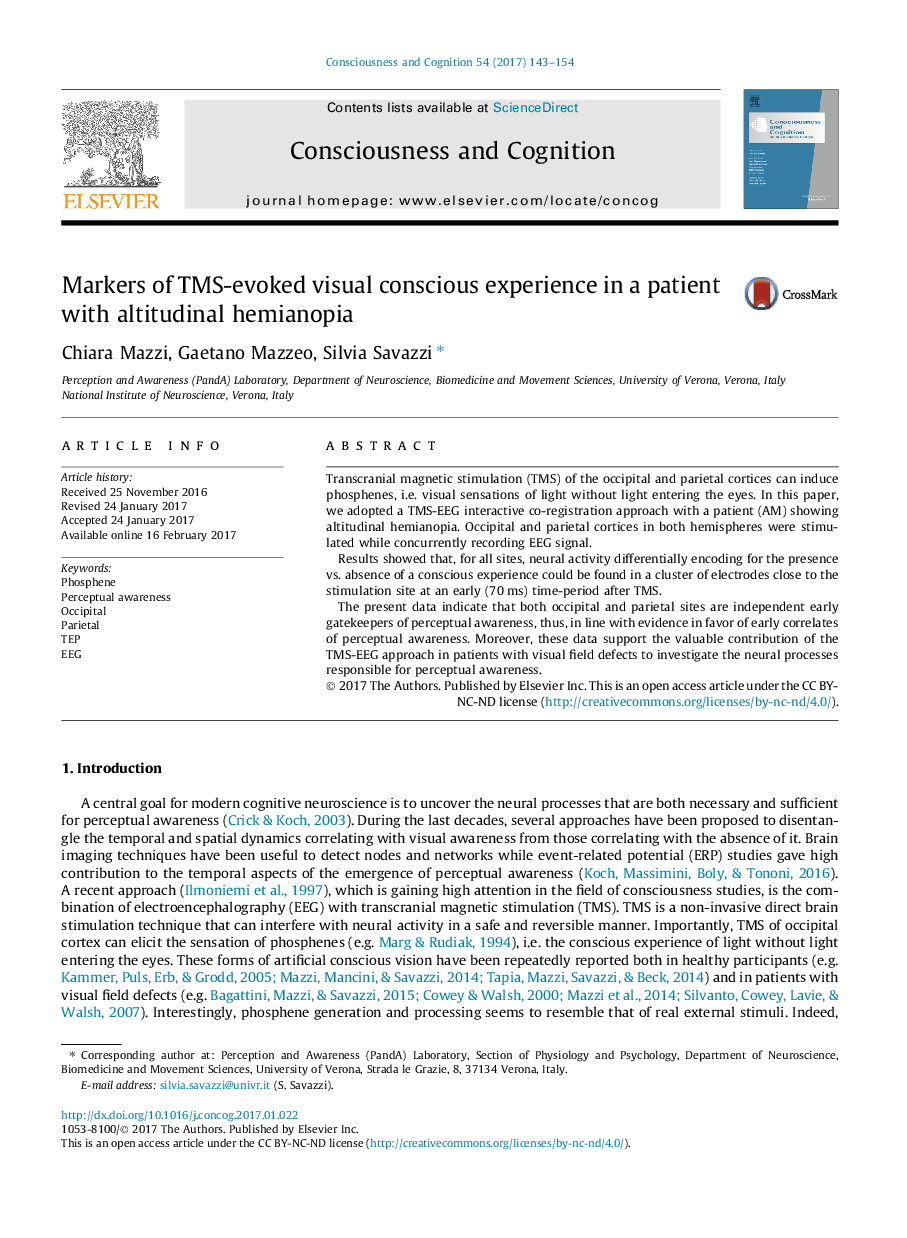| کد مقاله | کد نشریه | سال انتشار | مقاله انگلیسی | نسخه تمام متن |
|---|---|---|---|---|
| 5041729 | 1474157 | 2017 | 12 صفحه PDF | دانلود رایگان |

- TMS-evoked potentials were recorded in a patient with altitudinal hemianopia.
- Occipital and parietal cortices in both hemispheres were stimulated.
- Neural activity correlating with the presence/absence of phosphenes is different at 70Â ms after TMS.
- Occipital and parietal cortices are independent gatekeepers of perceptual awareness.
- Results support evidence accounting for early correlates of perceptual awareness.
Transcranial magnetic stimulation (TMS) of the occipital and parietal cortices can induce phosphenes, i.e. visual sensations of light without light entering the eyes. In this paper, we adopted a TMS-EEG interactive co-registration approach with a patient (AM) showing altitudinal hemianopia. Occipital and parietal cortices in both hemispheres were stimulated while concurrently recording EEG signal.Results showed that, for all sites, neural activity differentially encoding for the presence vs. absence of a conscious experience could be found in a cluster of electrodes close to the stimulation site at an early (70Â ms) time-period after TMS.The present data indicate that both occipital and parietal sites are independent early gatekeepers of perceptual awareness, thus, in line with evidence in favor of early correlates of perceptual awareness. Moreover, these data support the valuable contribution of the TMS-EEG approach in patients with visual field defects to investigate the neural processes responsible for perceptual awareness.
Journal: Consciousness and Cognition - Volume 54, September 2017, Pages 143-154